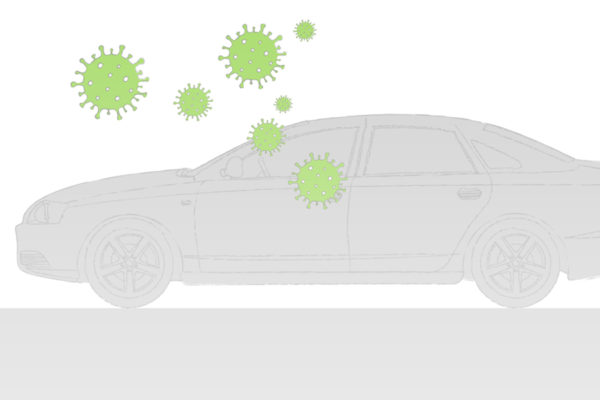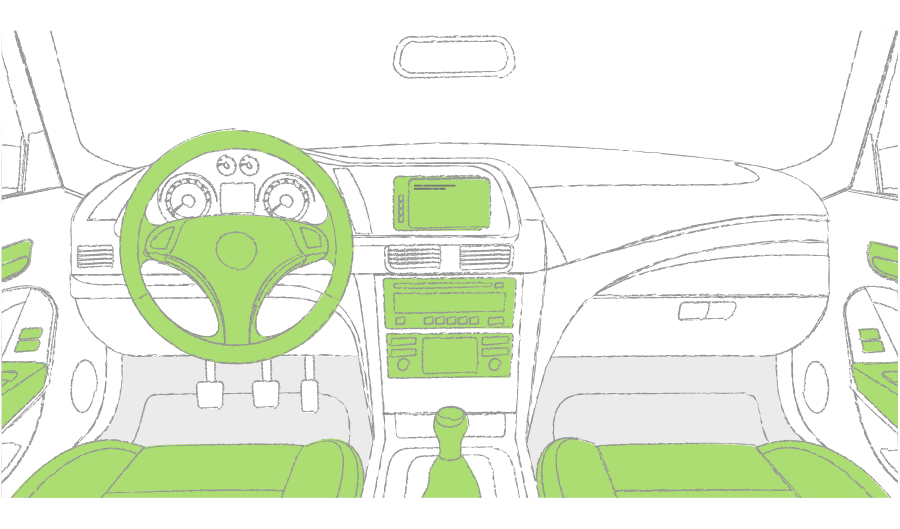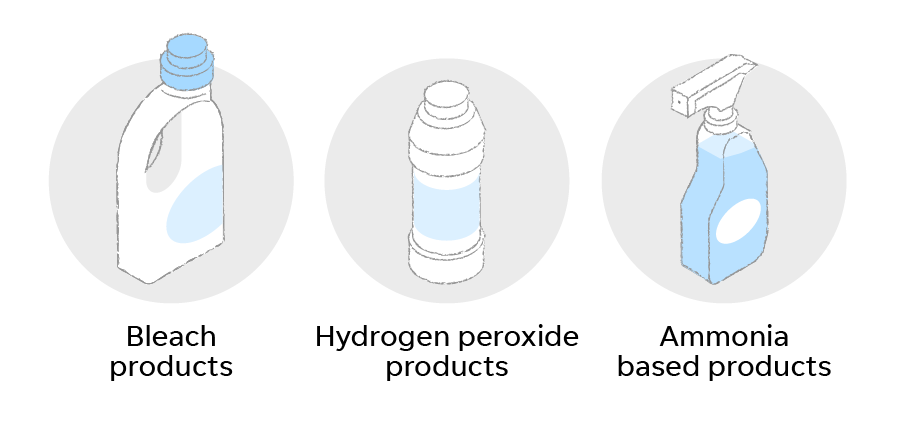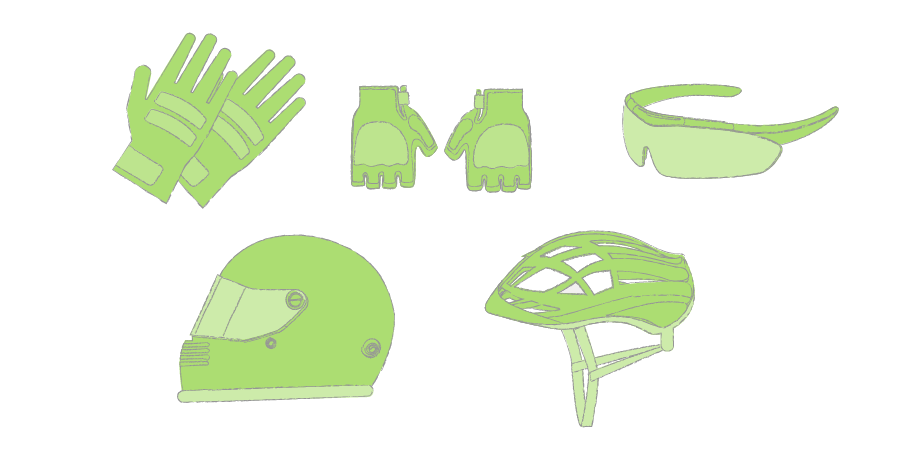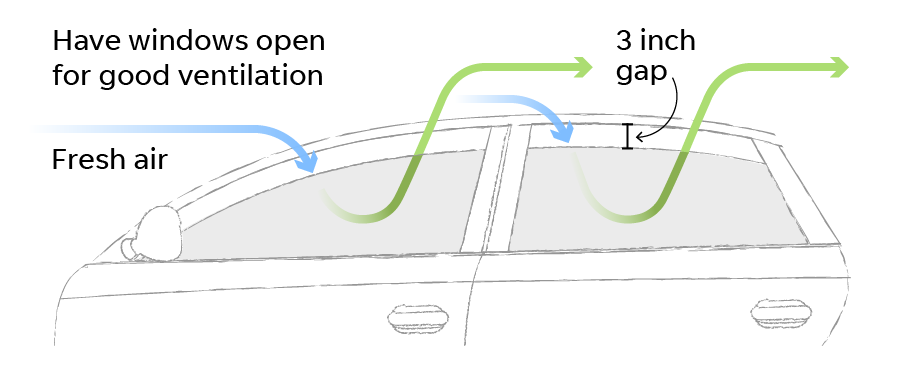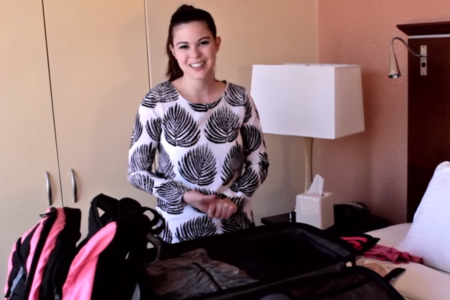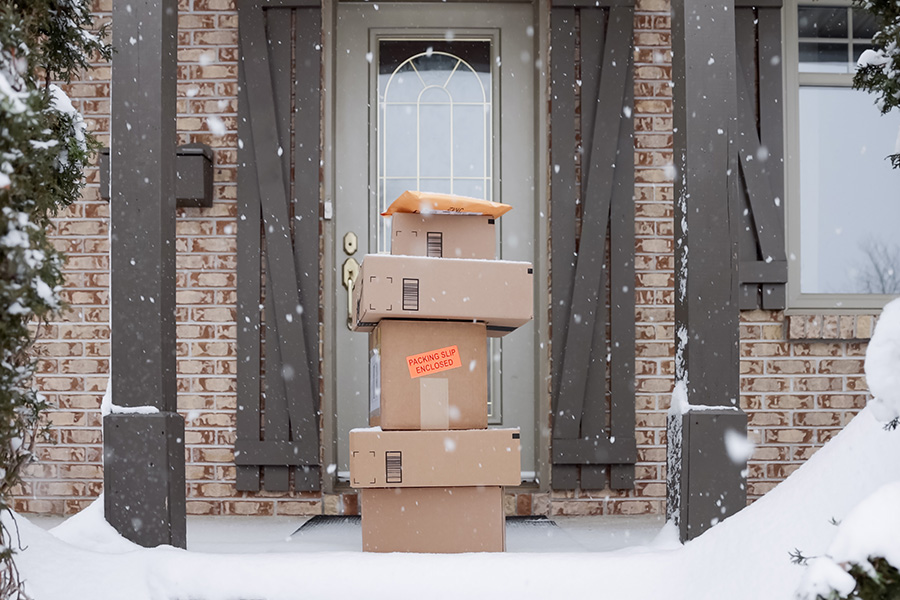By Janet Loehrke and Veronica Bravo, USA TODAY | May 1, 2020
With COVID-19 upon us, here’s how to safely clean your car’s interior without damaging it
With the COVID-19 pandemic upon us, our cars have become our protective bubble as we go out into the world. Just when you thought you were done cleaning your house from the coronavirus, now you need to clean your car. But we need to make sure it’s clean from the virus as well. Chances are you already have the cleaning supplies you need to clean your vehicle, and luckily it’s not too complicated.
Areas to clean are highlighted in green on the pictures below.
…
Interior surfaces to clean: High-touch areas ⇒
You should start off with the most frequently touched surfaces: the outside and inside door handles, steering wheel, gear shift, turn and wiper signal levers, any buttons on your radio and climate control unit, seat upholstery, seat belts, mirrors, driver and passenger armrests, grab handles and seat adjustment levers on both driver and passenger seats according to Consumer Reports.
Basic products to clean your car ⇒
Soap, water and alcohol solutions such as disinfectant wipes that contain at least 70% isopropyl alcohol are the most effective household products to kill the coronavirus according to the Centers for Disease Control and Prevention. Just like washing your hands for 20 seconds, that applies to your car’s interior surfaces too. Any product will need a few more seconds to breakdown the virus, so take your time before you wipe it clean.
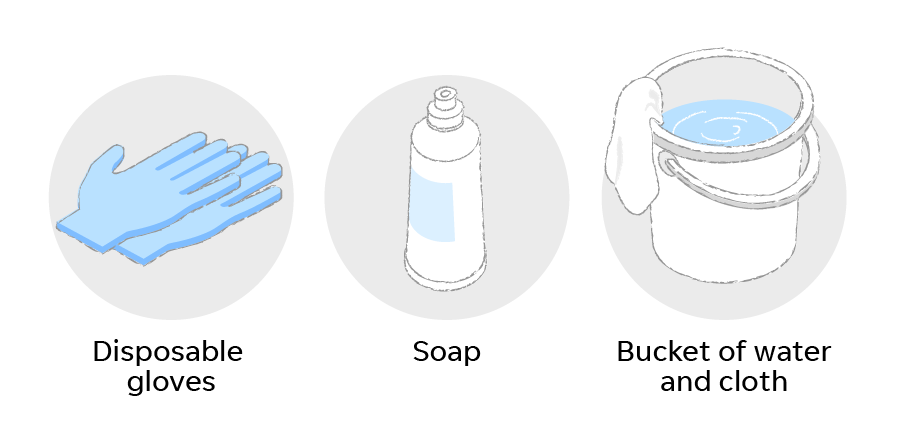
Most imitation leather and leather seats have a protective urethane coating, so using alcohol-based products can lead to damage if used too often. Therefore, soap is the safest for fabrics and leather seats. Gently clean the upholstery, making sure not to scrub too aggressively. Use small amounts of water, so you don’t soak through to the cushions beneath. For leather seats, a good conditioner applied afterward is recommended to avoid cracking. Wear disposable gloves while cleaning your car’s interior to protect yourself from any possible contaminants. Pay special attention to sensitive surfaces such as touch screens and electronics.
Oh – and spend a little extra time on that steering wheel, as it can have four times the germs than a public toilet seat, according to a study by CarRentals.com.
Don’t use these products to clean your car’s interior ⇒
It’s not recommended you use bleach, hydrogen peroxide, or ammonia-based products in your car, even though they kill the virus. They can damage the upholstery, plastic and other surfaces in the interior.
Products to keep in your car ⇒
It’s a good idea to keep hand sanitizer and disinfectant wipes in your car to clean your hands before you touch the steering wheel and other surfaces.
Cleaning other modes of transportation ⇒
Just like cars, any other modes of transportation you use will need to be sanitized. Any frequently touched surfaces should get a good cleaning.
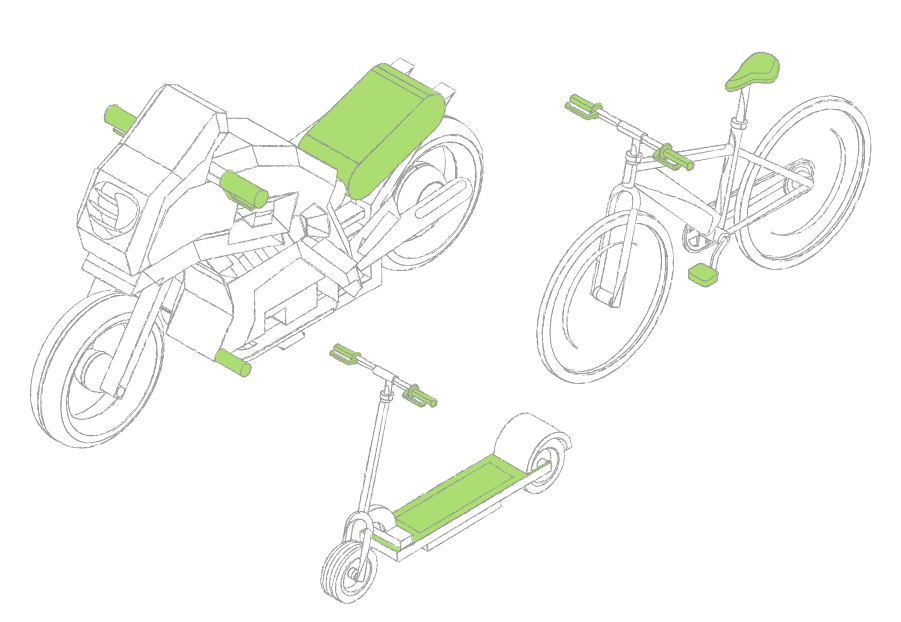
Any helmets, gloves or eye protection can use a quick wipe down with a disinfectant wipe.
Protecting yourself and others while in a car ⇒
The typical family car interior has a volume of about 100 cubic feet (a 10th the size of a bedroom). We might cram four – or sometimes five – people into that small space. It’s impossible to social distance in the car.

Here’s the potential problem as it relates to COVID-19. Over the decades, we’ve done a really nice job of sealing up our cars. Ever notice how quiet they are on the inside these days? That’s because every effort has been made to seal up every gap possible so there are better acoustics. The result is that the ventilation rate – how much fresh air comes into the car – can be quite low.
Coronavirus accumulation in vehicles
Riding in a car for 72 minutes with an infected passenger can cause fine COVID-19 aerosol particles to build up if windows are closed. The jagged nature of each curve corresponds to a cough every 3 minutes. Values are relative to the peak virus level when windows are closed.
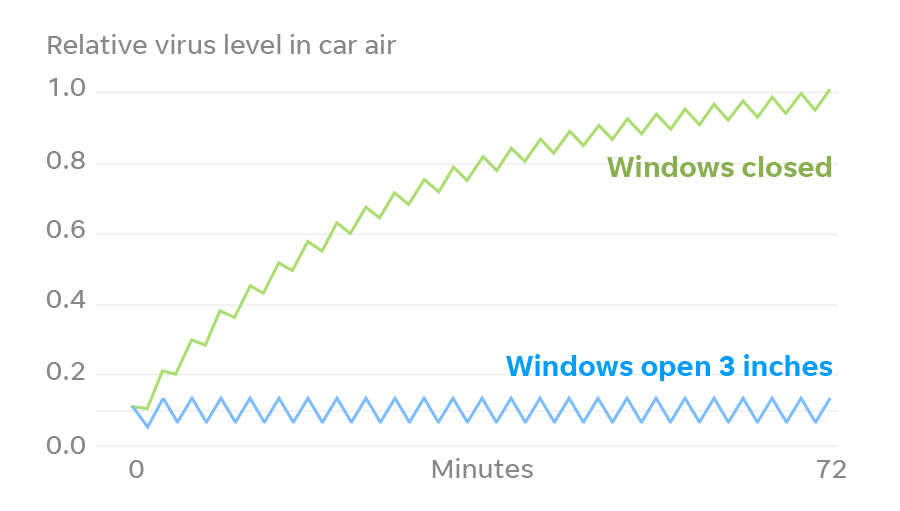 SOURCE: Harvard T.H. Chan School of Public Health; Portland State University’s Maseeh College of Engineering and Computer Science
SOURCE: Harvard T.H. Chan School of Public Health; Portland State University’s Maseeh College of Engineering and Computer Science
When the windows are closed, COVID-19 (in fine aerosol particles) accumulates in the car cabin. With each new cough, the concentration builds up with no significant dilution happening. But even cracking one window open just 3 inches can keep this at bay. So the next time you’re in the car — be it your own vehicle with others or in a taxi, Uber or Lyft — Open up the windows just a bit, even if everyone is feeling fine.
Sources: Consumer Reports; Car and Driver; Kelly Blue Book; Getty Images; USA TODAY research
Contributing: Joseph Allen, Jack Spengler and Richard Corsi
Read original article on USA TODAY
You may also be interested in:
- Stay Informed: COVID-19 Interactive Heat Map
- Apps and More: COVID-19 Resources for All Abilities
- How to Make a Cloth Face Mask (three methods) – Instructions from the CDC
- Getting Groceries During Quarantine
- When and How to Wash Your Hands
- 4 Tips to Help You Stay Healthy During COVID-19
- How to Prepare for COVID-19
- Facts About Novel Coronavirus and How to Prevent COVID-19
- Coronavirus Facts: What can older adults do to reduce their risk of illness?






